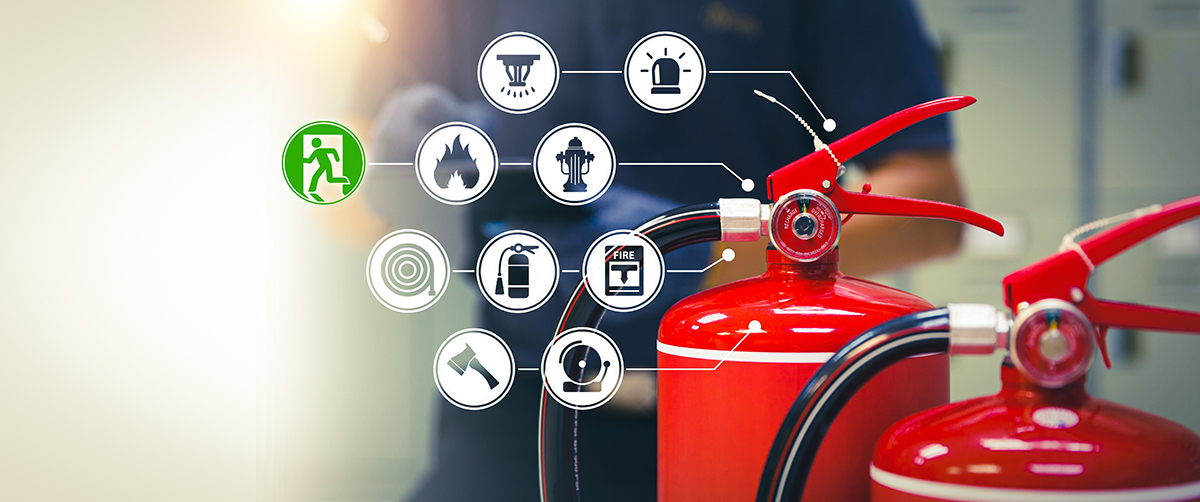Fire Industries British Standards Update

Published: Friday, 18 July 2025
In 2025, we have seen the BS 5839-1:2017 officially be withdrawn and replaced with BS 5839-1:2025 helping to make important changes to fire detection and alarm systems in non-domestic premises across the UK. The standard will affect people who oversee fire safety systems in schools, offices, hotels, and care homes and it is important you understand how this updated standard could impact you.
Key Changes to System Design & Installation
The update has made several changes aimed at improving the performance and consistency of fire alarm system design overall. This includes:
Sleeping Areas: For faster detection of fire risks, smoke detectors are now the preferred choice than heat detectors to be installed in bedrooms or sleeping areas. This impacts care homes, student accommodation, and hotels.
Low-Risk Lobbies: Low-risk areas will now require detection depending on the system category and risk profile.
Manual Call Points: The placement guidance has been improved to help to emphasise the accessibility in occupied zones.
Red Mains Cables: It is now required that fire alarm main cables are red so they can be clearly identifiable.
Backup Battery Sizing: The new standards has updated the battery backup calculation formula. You should review battery backup capacity, especially with older panels or larger systems so you can ensure compliance with a new calculation method.
New Panel Requirement: A new panel requirement has been implemented to reduce false alarms. A fire alarm control panel must now display a ‘False Alarm’ label to indicate that there is an automatic connection to fire and rescue services.
Lift Shafts: L4 systems need to now include detection at the top of lift shafts to improve response time in vertical escape routes.
Lockdown Alarms: Lockdown tones need to now be integrated so it provides a distinct from fire alarm signals.
Ceiling Obstructions: Ductwork or beams need to be considered as it can now interfere with detector coverage.
New Category L Monitoring Times: L-category systems now monitor activation signals within 90 seconds and will now detect faults within 3 minutes.

Updates to Maintenance & Servicing
Updates to maintenance have been looked at to ensure that your system are installed correctly and stay reliable throughout its lifespan. This features the following:
- Service intervals will remain at the standard of 6 months; however, you now have more flexibility of a 5 – 7-month window between your inspections and you won’t be deemed non-compliant.
- Your control panels must be adjusted now at every maintenance visit. This is to allow for accurate logging.
- Any variations from the British Standards (BS) have to be justified and recorded in your fire alarm logbook.
- Engineers must now undertake professional development training (CPD) when working on fire alarm systems.
- Any redundant equipment that is no long in use needs o be fully removed from your system and now can’t be just disconnected.
- The accessibility of your interfaces needs to be fully accessible for testing and the BS will no longer accept hidden within other control panels. Lift controls are an example of this.
Certification and Documentation Overhaul
BS 5839-1:2025 has also seen changes being made to how the systems are documented and certified. With updated certificates, we will see new templates being issued and will match revised clause numbers and terminology.
There is now a dedicated section that documents system extensions and upgrades that will impact the modification section.
We have seen a terminology refresh with terms such as “care homes” are now being referred to as “residential care premises” and “fire service” is now “fire and rescue service”.
We have seen structural updates to the BS with Clause 4 moving to the introduction and Clause 33 has been merged with Clause 31.
Enhanced Protection for All Building Users
As we push for improved safety, the changes made will look to protect a wider range of building occupants.
- Visual Alert Devices (VADs): These are increasingly required in areas where occupants may be deaf or hard of hearing.
- Multi-Zone Buildings: Buildings with multiple alarm zones now require clear zone plans, especially for sleeping-risk areas.
- Automated Alerts in Care Settings: In residential care premises, fire systems may now be expected to send automatic alerts to a remote monitoring centre to reduce emergency response times.
What to Do Next
As a responsible installer, building manager, or specifier, it’s essential to assess your current fire systems and ensure they meet the latest requirements.
- Review your panels, cables, and detectors for compliance
- Update zone plans and documentation
- Communicate the changes to stakeholders
- Get trained or refreshed on the new BS standard
At YESSS Electrical, we stock a wide range of fire detection systems, panels, and compliant cabling to help you meet the 2025 requirements. Speak to your local branch or browse online to find the right products for your next installation.

